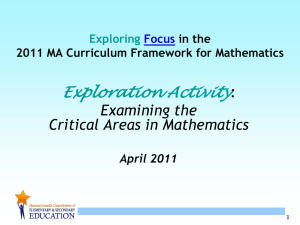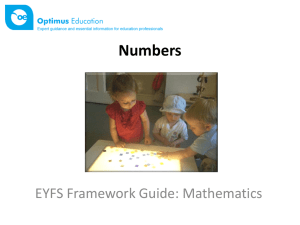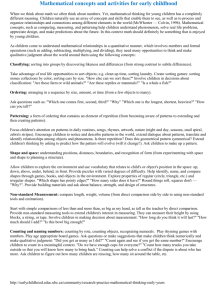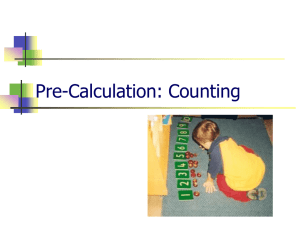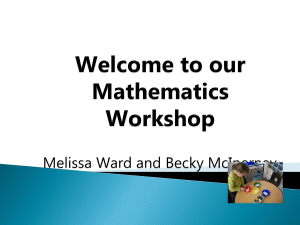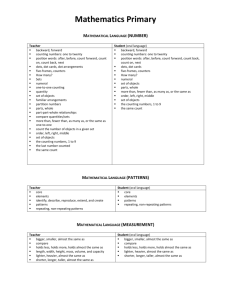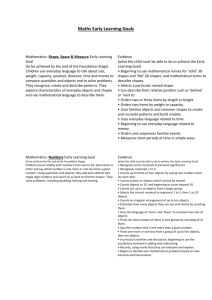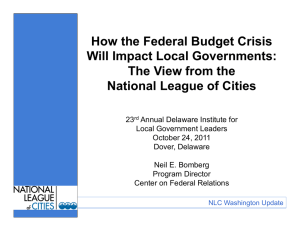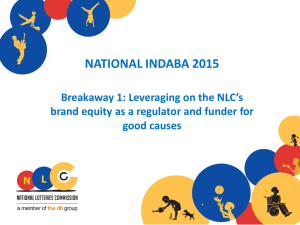FOUNDATION STAGE – PROBLEM SOLVING REASONING AND
advertisement
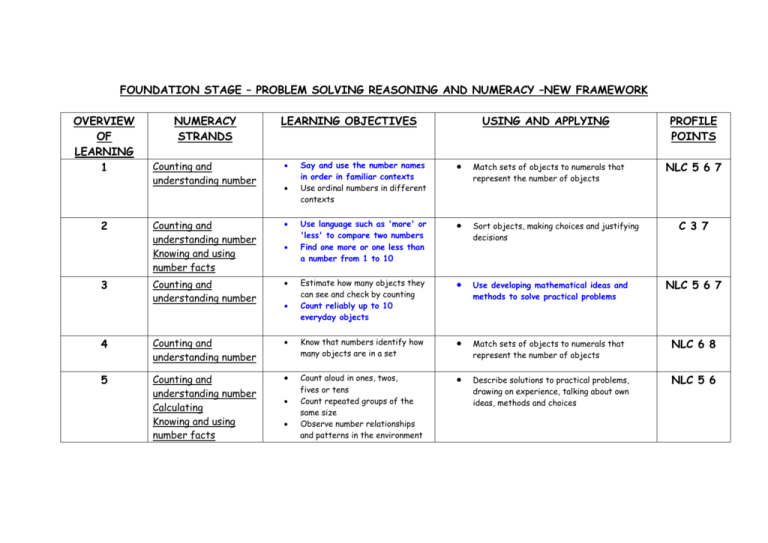
FOUNDATION STAGE – PROBLEM SOLVING REASONING AND NUMERACY –NEW FRAMEWORK OVERVIEW OF LEARNING 1 NUMERACY STRANDS LEARNING OBJECTIVES Counting and understanding number Counting and understanding number Knowing and using number facts Counting and understanding number 4 Counting and understanding number 5 Counting and understanding number Calculating Knowing and using number facts 2 3 USING AND APPLYING PROFILE POINTS Say and use the number names in order in familiar contexts Use ordinal numbers in different contexts Match sets of objects to numerals that represent the number of objects Use language such as 'more' or 'less' to compare two numbers Find one more or one less than a number from 1 to 10 Sort objects, making choices and justifying decisions Estimate how many objects they can see and check by counting Count reliably up to 10 everyday objects Use developing mathematical ideas and methods to solve practical problems NLC 5 6 7 Know that numbers identify how many objects are in a set Match sets of objects to numerals that represent the number of objects NLC 6 8 Count aloud in ones, twos, fives or tens Count repeated groups of the same size Observe number relationships and patterns in the environment Describe solutions to practical problems, drawing on experience, talking about own ideas, methods and choices NLC 5 6 NLC 5 6 7 C 3 7 and use these to derive facts 6 Handling data 7 8 9 Sort objects, making choices and justifying decisions SSM 2 8 NLC 8 (using and applying) Counting and understanding number Knowing and using number facts Recognise numerals 1 to 9 Match sets of objects to numerals that represent the number of objects NLC 4 5 Select two groups of objects to make a given total of objects Use developing mathematical ideas and methods to solve practical problems C 4 5 Calculating Begin to relate addition to combining two groups of objects and subtraction to 'taking away' In practical activities and discussion begin to use the vocabulary involved in adding and subtracting Describe solutions to practical problems, drawing on experience, talking about their own ideas, methods and choices C 4 5 6 Share objects into equal groups and count how many in each group Describe solutions to practical problems, drawing on experience, talking about their own ideas, methods and choices C 4 5 6 10 Sort familiar objects to identify their similarities and differences Count how many objects share a particular property, presenting results using pictures, drawings or numerals Calculating 11 Understanding shape Use familiar objects and common shapes to create and recreate patterns and build models. Use language such as 'circle' or 'bigger' to describe the shape and size of solids and flat shapes. Talk about, recognise and recreate simple patterns SSM 4 6 8 12 Understanding shape Use everyday words to describe position Use developing mathematical ideas and methods to solve practical problems SSM 5 13 Measuring Use language such as 'greater', 'smaller', 'heavier' or 'lighter' to compare quantities Sort objects, making choices and justifying decisions SSM 7 14 Measuring Use everyday language related to time; order and sequence familiar events and measure short periods of time Use developing mathematical ideas and methods to solve practical problems SSM 8 (using and applying)
